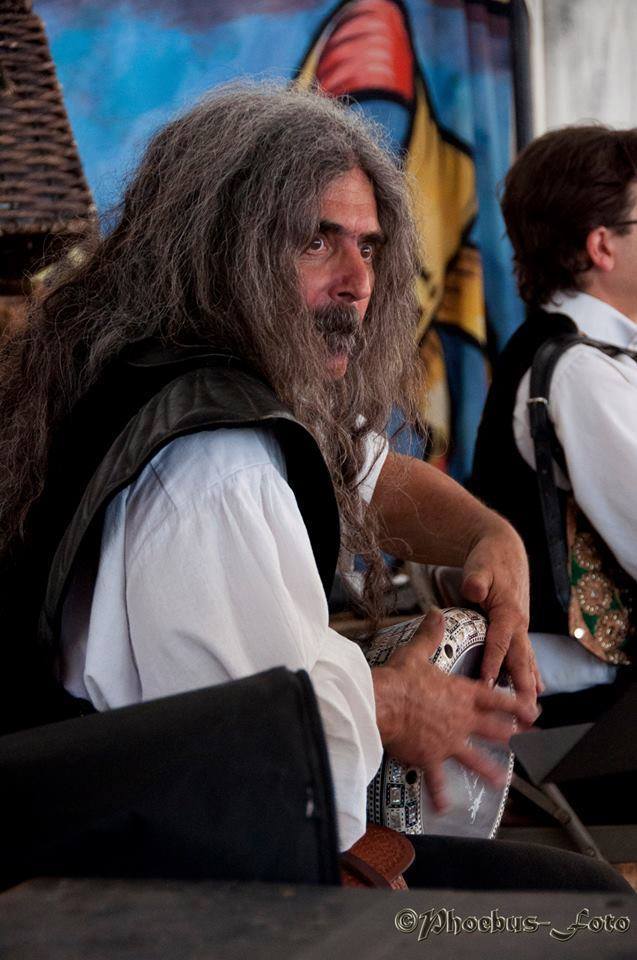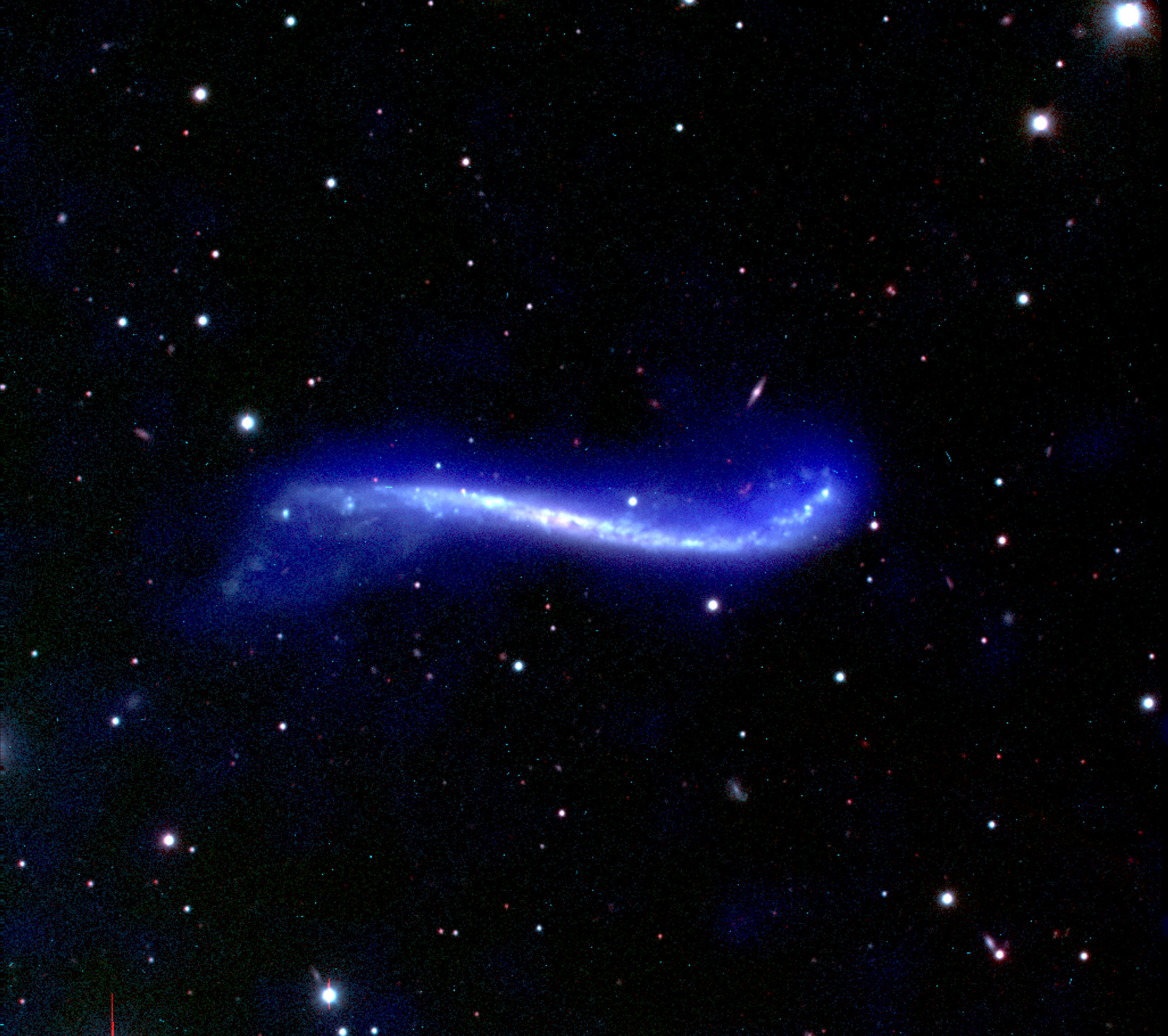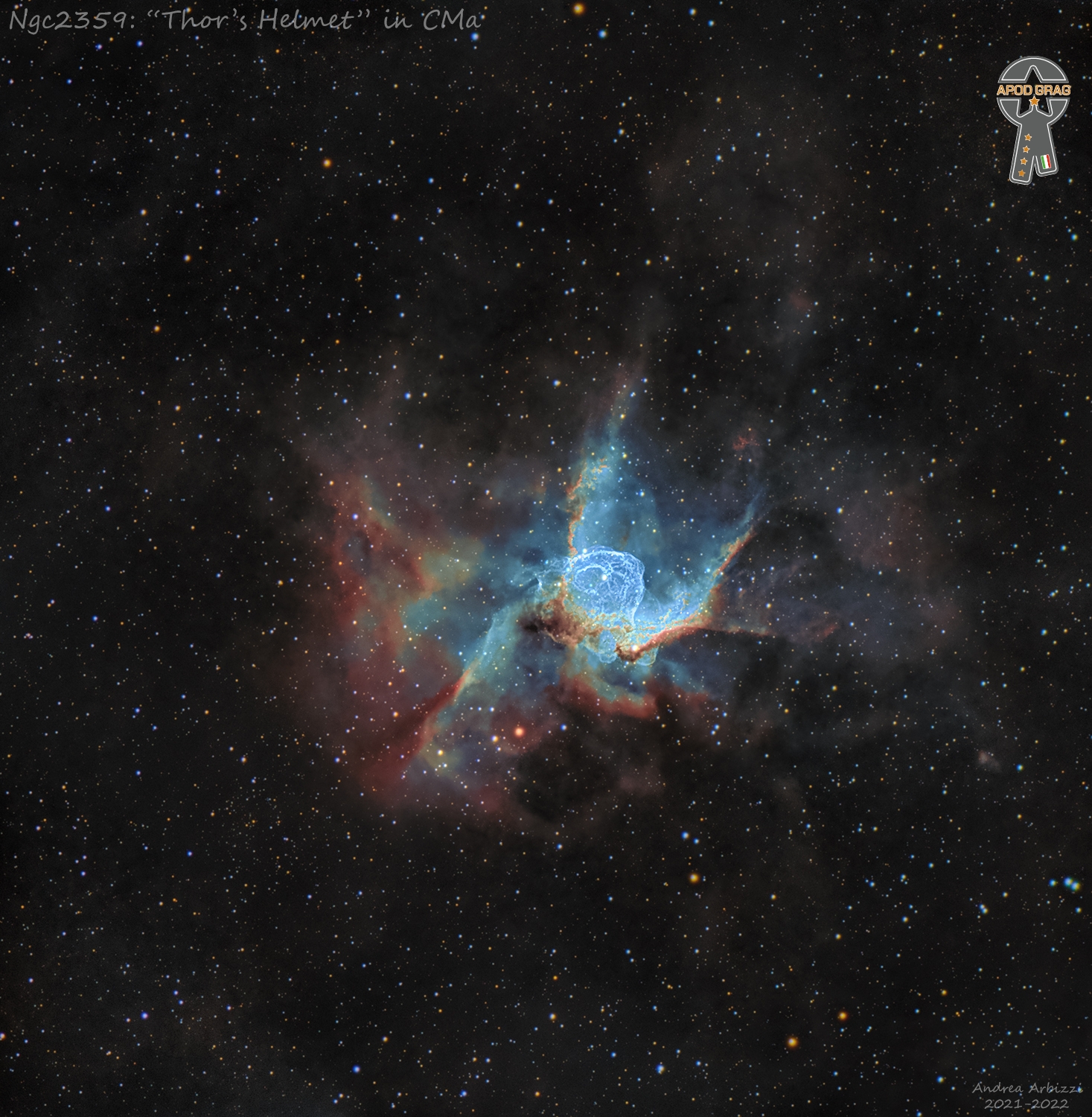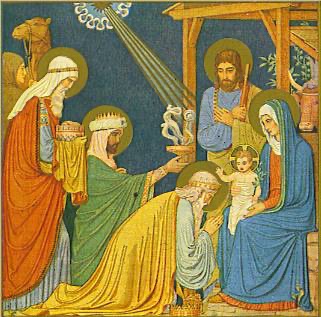Blog

As NASA’s Juno mission completed its 43rd close flyby of Jupiter on July 5, 2022, its JunoCam instrument captured this striking view of vortices – hurricane-like spiral wind patterns – near the planet’s north pole.
These powerful storms can be over 30 miles (50 kilometers) in height and hundreds of miles across. Figuring out how they form is key to understanding Jupiter’s atmosphere, as well as the fluid dynamics and cloud chemistry that create the planet’s other atmospheric features. Scientists are particularly interested in the vortices’ varying shapes, sizes, and colors. For example, cyclones, which spin counter-clockwise in the northern hemisphere and clockwise in the southern, and anti-cyclones, which rotate clockwise in the northern hemisphere and counter-clockwise in the southern hemisphere, exhibit very different colors and shapes.
A NASA citizen science project, Jovian Vortex Hunter, seeks help from volunteer members of the public to spot and help categorize vortices and other atmospheric phenomena visible in JunoCam photos of Jupiter. This process does not require specialized training or software, and can be done by anyone, anywhere, with a cellphone or laptop. As of July 2022, 2,404 volunteers had made 376,725 classifications using the Jovian Vortex Hunter project website.

David Robert Jones (8 January 1947 – 10 January 2016), known professionally as David Bowie was an English singer-songwriter and actor. A leading figure in the music industry, he is regarded as one of the most influential musicians of the 20th century. Bowie was acclaimed by critics and musicians, particularly for his innovative work during the 1970s. His career was marked by reinvention and visual presentation, and his music and stagecraft had a significant impact on popular music.
Bowie developed an interest in music from an early age. He studied art, music and design before embarking on a professional career as a musician in 1963. “Space Oddity“, released in 1969, was his first top-five entry on the UK Singles Chart. After a period of experimentation, he re-emerged in 1972 during the glam rock era with his flamboyant and androgynous alter ego Ziggy Stardust. The character was spearheaded by the success of Bowie’s single “Starman” and album The Rise and Fall of Ziggy Stardust and the Spiders from Mars, which won him widespread popularity. In 1975, Bowie’s style shifted towards a sound he characterised as “plastic soul“, initially alienating many of his UK fans but garnering him his first major US crossover success with the number-one single “Fame” and the album Young Americans. In 1976, Bowie starred in the cult film The Man Who Fell to Earth and released Station to Station. In 1977, he again changed direction with the electronic-inflected album Low, the first of three collaborations with Brian Enothat came to be known as the “Berlin Trilogy“. “Heroes” (1977) and Lodger (1979) followed; each album reached the UK top five and received lasting critical praise.
After uneven commercial success in the late 1970s, Bowie had three number-one hits: the 1980 single “Ashes to Ashes“, its album Scary Monsters (and Super Creeps), and “Under Pressure” (a 1981 collaboration with Queen). He achieved massive commercial success in the 1980s starting with Let’s Dance (1983). Between 1988 and 1992, he fronted the hard rock band Tin Machine before resuming his solo career in 1993. Throughout the 1990s and 2000s, Bowie continued to experiment with musical styles, including industrial and jungle. He also continued acting; his roles included Major Jack Celliers in Merry Christmas, Mr. Lawrence (1983), Jareth the Goblin King in Labyrinth (1986), Pontius Pilate in The Last Temptation of Christ (1988), and Nikola Tesla in The Prestige (2006), among other film and television appearances and cameos. He stopped touring after 2004 and his last live performance was at a charity event in 2006. In 2013, Bowie returned from a decade-long recording hiatus with The Next Day. He remained musically active until his death from liver cancer at his home in New York City. He died two days after both his 69th birthday and the release of his final album, Blackstar (2016).
During his lifetime, his record sales, estimated at over 100 million records worldwide, made him one of the best-selling musicians of all time. In the UK, he was awarded ten platinum, eleven gold and eight silver album certifications, and released 11 number-one albums. In the US, he received five platinum and nine gold certifications. He was inducted into the Rock and Roll Hall of Fame in 1996. Rolling Stone ranked him among the greatest artists in history. As of 2022, Bowie was the best-selling vinyl artist of the 21st century.
more...Dave Weckl (born January 8, 1960 in St. Louis, Missouri) is an American jazz fusion drummer and the leader of the Dave Weckl Band. He was inducted into the Modern Drummer Hall of Fame in 2000.
Weckl started playing his first set of drums at age 8 in his spare room along to records. He later played in the living room, sometimes with his father on piano. Weckl studied at the University of Bridgeport. Starting out on the New York fusion scene in the early 1980s, Weckl soon began working with artists such as Paul Simon, George Benson, Michel Camilo, Robert Plant, and Anthony Jackson.
He was with the Chick Corea Elektric Band from 1985 to 1991. During this time he performed on many albums and also appeared with Corea’s Akoustic Band. He said he “augmented his work with Corea by continuing his session work and appearing often with the GRP All-Star Big Band“. Weckl has released a series of instructional videotapes. His first recording as leader was in 1990 – Master Plan, for GRP. This was followed by Heads Up in 1992, and Hard-Wired in 1994. Later on, Weckl recorded and toured with guitarist Mike Stern.
more...Elvis Aaron Presley (January 8, 1935 – August 16, 1977), or simply Elvis, was an American singer and actor. Dubbed the “King of Rock and Roll“, he is regarded as one of the most significant cultural figures of the 20th century. His energized interpretations of songs and sexually provocative performance style, combined with a singularly potent mix of influences across color lines during a transformative era in race relations, led him to both great success and initial controversy.
Presley was born in Tupelo, Mississippi, and relocated to Memphis, Tennessee, with his family when he was 13 years old. His music career began there in 1954, recording at Sun Records with producer Sam Phillips, who wanted to bring the sound of African-American music to a wider audience. Presley, on rhythm acoustic guitar, and accompanied by lead guitarist Scotty Moore and bassist Bill Black, was a pioneer of rockabilly, an uptempo, backbeat-driven fusion of country music and rhythm and blues. In 1955, drummer D. J. Fontana joined to complete the lineup of Presley’s classic quartet and RCA Victor acquired his contract in a deal arranged by Colonel Tom Parker, who would manage him for more than two decades. Presley’s first RCA Victor single, “Heartbreak Hotel“, was released in January 1956 and became a number-one hit in the United States. Within a year, RCA would sell ten million Presley singles. With a series of successful network television appearances and chart-topping records, Presley became the leading figure of the newly popular sound of rock and roll; though his performative style and promotion of the then-marginalized sound of African-Americans led to him being widely considered a threat to the moral well-being of the White American youth.
In November 1956, Presley made his film debut in Love Me Tender. Drafted into military service in 1958, Presley relaunched his recording career two years later with some of his most commercially successful work. He held few concerts, however, and guided by Parker, proceeded to devote much of the 1960s to making Hollywood films and soundtrack albums, most of them critically derided. Some of his most famous films included Jailhouse Rock(1957), Blue Hawaii (1961), and Viva Las Vegas (1964). In 1968, following a seven-year break from live performances, he returned to the stage in the acclaimed television comeback special Elvis, which led to an extended Las Vegas concert residency and a string of highly profitable tours. In 1973, Presley gave the first concert by a solo artist to be broadcast around the world, Aloha from Hawaii. Years of prescription drug abuse and unhealthy eating habits severely compromised his health, and he died suddenly in 1977 at his Graceland estate at the age of 42.
Having sold over 400 million records worldwide, Presley is recognized as the best-selling solo music artist of all time by Guinness World Records. He was commercially successful in many genres, including pop, country, rhythm & blues, adult contemporary, and gospel. Presley won three Grammy Awards, received the Grammy Lifetime Achievement Award at age 36, and has been inducted into multiple music halls of fame. He holds several records, including the most RIAA certified gold and platinum albums, the most albums charted on the Billboard 200, the most number-one albums by a solo artist on the UK Albums Chart, and the most number-one singles by any act on the UK Singles Chart. In 2018, Presley was posthumously awarded the Presidential Medal of Freedom.
more...Hudson Whittaker (born Hudson Woodbridge; January 8, 1903 – March 19, 1981), known as Tampa Red, was a Chicago blues musician.
His distinctive single-string slide guitar style, songwriting and bottleneck technique influenced other Chicago blues guitarists such as Big Bill Broonzy, Robert Nighthawk, Muddy Waters, Elmore James and Mose Allison. In a career spanning over 30 years, he also recorded pop, R&B and hokum songs. His best-known recordings include “Anna Lou Blues”, “Black Angel Blues“, “Crying Won’t Help You”, “It Hurts Me Too“, and “Love Her with a Feeling“.
Tampa Red was born Hudson Woodbridge in Smithville, Georgia. The date of his birth is uncertain, with Tampa himself giving years varying from 1900 to 1908. The birth date given on his death certificate is January 8, 1904. His parents, John and Elizabeth Woodbridge, died when he was a child, and he moved to Tampa, Florida, where he was raised by his aunt and grandmother and adopted their surname, Whittaker. He emulated his older brother, Eddie, who played the guitar around the Tampa area, and he was especially inspired by an old street musician called Piccolo Pete, who first taught him to play blues licks on the guitar. Red also picked up some knowledge from early recordings of female blues singers like Ma Rainey, Bessie Smith, and Ida Cox. In an interview with Martin Williams, Red told Williams “That [1920] record of “Crazy Blues” by Mamie Smith, it was one of the first blues records ever made. I said to myself, ‘I don’t know any music, but I can play that.’
more...
A poem by mick laBriola
“When the birds fall from the sky,
and the fish are all left out to dry;
the message becomes very clear you see, if this is Armageddon,
it’s time to set yourself free!
Love each other and hold on to the ground, the Mother Ship is coming,
just look all around.”
m.laBriola 2011

NGC 3697 is a spiral galaxy in the constellation of Leo. It was discovered on 24 February 1827 by John Herschel. It was described as “extremely faint, very small, extended 90°” by John Louis Emil Dreyer, the compiler of the New General Catalogue. It is a member of HCG 53, a compact group of galaxies. The Integral Sign Galaxy (UGC 3697) is a very thin, faint, edge-on spiral galaxy in the constellation Camelopardalis. Its distinctive shape helps dispel any notion that there’s no link between astronomy an mathematics! The Integral Sign Galaxy (Uppsala 3697) is an example of a “super-thin galaxy” – a term devised by Goad and Roberts in the 1980 for edge-on galaxies with with an axial ratio of 8:1 or more, and other peculiarities such as a lack of central bulge. Just 8′ SE (perhaps 39 kpc in linear distance) lies another a bright galaxy, gravitational interaction with which might be the cause of the Integral Sign’s warped-disk.

Kenneth Clark Loggins (born January 7, 1948 Everett, WA) is an American guitarist, singer and songwriter. His early songs were recorded with the Nitty Gritty Dirt Band in 1970, which led to seven albums recorded as Loggins and Messina from 1972 to 1977. His early soundtrack contributions date back to A Star Is Born in 1976,and he is known as the King of the Movie Soundtrack. As a solo artist, Loggins experienced a string of soundtrack successes, including an Academy Awardnomination for “Footloose” in 1985. Finally Home was released in 2013, shortly after Loggins formed the group Blue Sky Riders with Gary Burr and Georgia Middleman. He won a Daytime Emmy Award, two Grammy Awards and was nominated for an Academy Award, a Tony Award and a Golden Globe Award.
more...Earl Wilberforce “Wire” Lindo (7 January 1953 – 4 September 2017), sometimes referred to as Wya, was a Jamaican reggae musician. He was a member of Bob Marley and the Wailers and collaborated with numerous reggae artists including Burning Spear.
While attending Excelsior High School in Jamaica, he played with Barry Biggs, Mikey “Boo” Richards, and Ernest Wilson in the Astronauts, and later played organ in the band Now Generation, and with Tommy McCook and the Supersonics, and the Meters. Aston “Familyman” Barrett heard Lindo and recommended him to play for a Saturday afternoon television program Where It’s At on JBC. Lindo also spent his early days working at Coxsone Dodd‘s Studio One, where he played on innumerable recordings.
In 1973, he was invited to join The Wailers on a US tour, going on to play on Burnin’. He left the Wailers in 1974 to join Taj Mahal‘s band.
Lindo can be heard on an album credited to the Impact All-Stars. Released in 1975, the album is a collection of dub tracks recorded at Randy’s Studio 17. On his return to Jamaica he played on recordings by Big Youth, Culture, I Roy, and Al Brown, and had some success with solo singles “No Soul Today” and “Who Done It”.In 1978 he rejoined the Wailers, playing on Babylon by Bus, Survival, and Uprising.
After Marley’s death, Lindo was a member of The Wailers Band.
Lindo died in a London hospital on 4 September 2017, aged 64, shortly after being admitted with abdominal pain. Among the tributes paid, Olivia Grange, Minister of Culture, Gender, Entertainment and Sport, described him as “an exceptionally gifted musician who played a pivotal role alongside Bob Marley and the Wailers in the global success of Jamaica’s reggae music.”
more...Eldee Young (January 7, 1936 – February 12, 2007) was a jazz double-bass and cello player who performed in the cool jazz, post bop and rhythm and blues mediums.
Born in 1936 in Chicago, Illinois, Young started playing upright bass at the age of 13. He was helped by his eldest brother who played guitar. He joined the Ramsey Lewis Trio in 1955. After a decade together he split along with bandmate, Isaac “Red” Holt to form the Young-Holt Trio. They changed their name to Young-Holt Unlimited in 1968. After they split in 1974, Young continued playing, mainly with small groups in Chicago.
He also played with pianist Jeremy Monteiro for more than 20 years. Young also appeared on the albums of James Moody and Eden Atwood, among others.
Young died in Bangkok, Thailand, from a heart attack at age 71.
more...Luciano Pozo González (January 7, 1915 – December 3, 1948), known professionally as Chano Pozo, was a Cuban jazz percussionist, singer, dancer, and composer. Despite only living to age 33, he played a major role in the founding of Latin jazz. He co-wrote some of Dizzy Gillespie‘s Latin-flavored compositions, such as “Manteca” and “Tin Tin Deo”, and was the first Latin percussionist in Gillespie’s band.
Luciano “Chano” Pozo González was born in Havana to Cecelio González and Carnación Pozo. Chano grew up with three sisters and a brother, as well as his older half brother, Félix Chappottín, who would later become one of the great Cuban soneros. The family struggled with poverty throughout his youth. His mother died when Chano was eleven, and Cecelio took his family to live with his long-time mistress, Natalia, who was Felix’s mother.
Chano Pozo was shot and killed on December 2, 1948, in the El Rio Bar at 111th St and Lenox Avenue in Harlem.[1] The El Rio Bar no longer exists — even the small triangular block where it was located has been removed. Pozo’s killer was a local bookie named Eusebio “Cabito” Munoz. Pozo is buried in the Colón Cemetery, Havana.
more...Bobo Jenkins (January 7, 1916 – August 14, 1984) was an American Detroit blues and electric blues guitarist, singer and songwriter. He also built and set up his own recording studio and record label in Detroit. Jenkins is best known for his recordings of “Democrat Blues” and “Tell Me Where You Stayed Last Night”.
He was born John Pickens Jenkins in Forkland, Alabama. His father, a sharecropper, died when John was not yet one year old, and the boy grew up with his mother and uncle. He left home before the age of 12, and arrived in Memphis, Tennessee. He had a wife at the age of 14, the first of ten marriages. Jenkins took casual work in the Mississippi Delta for several years and then enrolled in the United States Army. Following his 1944 military discharge, he relocated to Detroit, working for Packard and managing a garage, before spending twenty-seven years working for Chrysler.
In the late 1940s Jenkins learned to play the guitar and started writing songs. He wrote the politically themed “Democrat Blues”, about the U.S. Election Day in 1952, expressing his unease about Dwight D. Eisenhower becoming the first Republican in the White House in almost twenty years.
more...NGC 2359 (also known as Thor’s Helmet) is an emission nebula in the constellation Canis Major. The nebula is approximately 3,670 parsecs (11.96 thousand light years) away and 30 light-years in size. The central star is the Wolf-Rayet star WR7, an extremely hot star thought to be in a brief pre-supernova stage of evolution. It is similar in nature to the Bubble Nebula, but interactions with a nearby large molecular cloud are thought to have contributed to the more complex shape and curved bow-shock structure of Thor’s Helmet. It is also catalogued as Sharpless 2-298 and Gum 4.

more...
Alexandra Elene MacLean Denny (6 January 1947 – 21 April 1978) was an English singer who was lead singer of the British folk rock band Fairport Convention. She has been described as “the pre-eminent British folk rock singer”.
After briefly working with the Strawbs, Denny joined Fairport Convention in 1968, remaining with them until 1969. She formed the short-lived band Fotheringay in 1970, before focusing on a solo career. Between 1971 and 1977, Denny released four solo albums: The North Star Grassman and the Ravens, Sandy, Like an Old Fashioned Waltz and Rendezvous. She also duetted with Robert Plant on “The Battle of Evermore” for Led Zeppelin‘s album Led Zeppelin IV in 1971. Denny died in 1978 at the age of 31 due to injuries and health issues related to alcohol abuse.
Music publications Uncut and Mojo have described Denny as Britain’s finest female singer-songwriter. Her composition “Who Knows Where the Time Goes?” has been recorded by Judy Collins, Eva Cassidy, Nina Simone, 10,000 Maniacs and Cat Power. Her recorded work has been the subject of numerous reissues, along with a wealth of previously unreleased material which has appeared over the more than 40 years since her death, including a 19-CD box set released in November 2010.
In January 2023, Denny was ranked #164 on Rolling Stone‘s list of the 200 Greatest Singers of All Time. At 7:50 pm on 21 April 1978, Sandy Denny died, without regaining consciousness. Her death was ruled to be the result of a traumatic mid-brain haemorrhage and blunt force trauma to her head. She was 31 years old.
more...
More Posts
- Cyril Neville
- John Prine
- Junior Mance
- Thelonious Monk
- World Music El Khat
- Daily Roots Gregory Morris
- MAROONS Minnetonka Community Center
- Cosmos M106
- Camille Saint-Saëns
- John Lennon
- Abdullah Ibrahim
- Yusef Lateef
- World Music Silkroad Ensemble with Rhiannon Giddens
- Daily Roots Monkey Man
- Marcus Garvey Intelligence
- Chief Sitting Bull Rights
- Cosmos M100
- Hamish Stuart
- Sonny Igoe
- Pepper Adams
